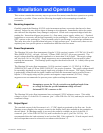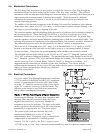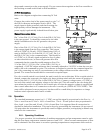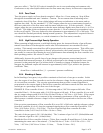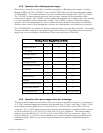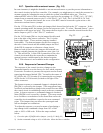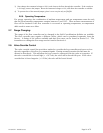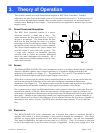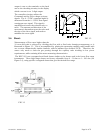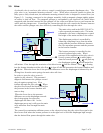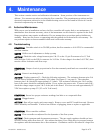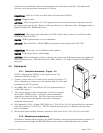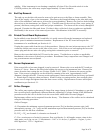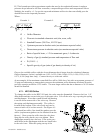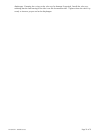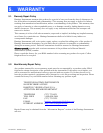
141-072011 - 201/203 Series Page 18 of 23
4. Maintenance
This section contains service and calibration information. Some portions of the instrument are
delicate. Use extreme care when servicing the flow controller. The potentiometer positions and the
electrical components referred to in the troubleshooting section can be found in Section 6.0 on the
electrical component layout drawing.
4.1. Authorized Maintenance
With proper care in installation and use, the flow controller will require little or no maintenance. If
maintenance does become necessary, most of the instrument can be cleaned or repaired in the field.
Some procedures may require recalibration. Do not attempt these procedures unless facilities are
available. Entry into the sensor or tampering with the printed circuit board will void warranty. Do
not perform repairs on these assemblies while unit is still under warranty.
4.2. Troubleshooting
SYMPTOM: Override switch is in CLOSE position, but flow remains or 0.00 VDC is commanded
and flow remains.
CAUSE: Orifice out of adjustment or faulty op-amp
ACTION: Check the valve voltage between pins 2 & 12 on the 15-pin D-connector for 15 Volt
units and pins 5 & 8 on the DE-9 connector for 24 Volts. If the voltage is less than 3.00 VDC, then
turn the orifice clockwise until flow stops.
SYMPTOM: Output of unit is proportional to flow but extremely small and not correctable by span
pot.
CAUSE: Sensor is not being heated.
ACTION: Unplug connector J2. Check the following resistance: The resistance between pins 2 &
3 of the sensor should be approximately 2500 ohms (see Figure 3.1 on page 8). The resistance
between pins 1 & 4 should be approximately 2.3 ohms. The resistance between pins 2 & 3 and the
base of the sensor should be essentially infinite. If not, replace the sensor unit. If sensor reads O.K.,
check the voltage output on pins 2 & 3 of the jack in the board. If it does not read approximately 22
VDC then replace op-amp U2 (U3 on 24 Volt board).
SYMPTOM: Sensor has proper resistance readings, but little or no output with flow.
CAUSE: Plugged sensor.
ACTION: Shut off gas supply and power supply. Remove cover and PC board from unit. Remove
sensor assembly and examine. If sensor has evidence of plugging, clean or replace as applicable
SYMPTOM: Flow controller oscillates.
CAUSE: Flow controller not adjusted for the dynamics of the flow system.
ACTION: Check upstream and downstream pressures. The gas supply regulator should not have
excessive lockup when flow shuts off. Also ensure that there is not a large drop in pressure between
the regulator and the instrument due to line resistance. Oscillations can also be caused if a large flow



